-
Posts
41,765 -
Joined
-
Last visited
-
Days Won
919
Content Type
Profiles
Forums
Blogs
Gallery
Downloads
Events
Posts posted by LoooSeR
-
-
When you are doing everything you can to not have proper 4th gen ATGMs.

OSN Viking ATGM contraption to shoot over obsticles.
Spoiler

UAF take on same idea:

-
-
Quote
On the afternoon of January 14, the General Directorate of Rocketry of the DPRK conducted a test launch of a medium- and long-range solid-propellant ballistic missile with a hypersonic maneuverable guided warhead.
The test launch is aimed at confirming the gliding and maneuvering flight characteristics of a mid- and long-range hypersonic maneuverable guided warhead and the reliability of new multi-stage heavy-duty solid propellant jet engines.
The launch was successful.This test launch had no impact on the security of surrounding countries and took place regardless of the situation in the region.
The Main Directorate of Rocket Science explained that the current test serves as one of the links in the regular activities of the Main Directorate and defense research institutes for the development of powerful weapons systems.
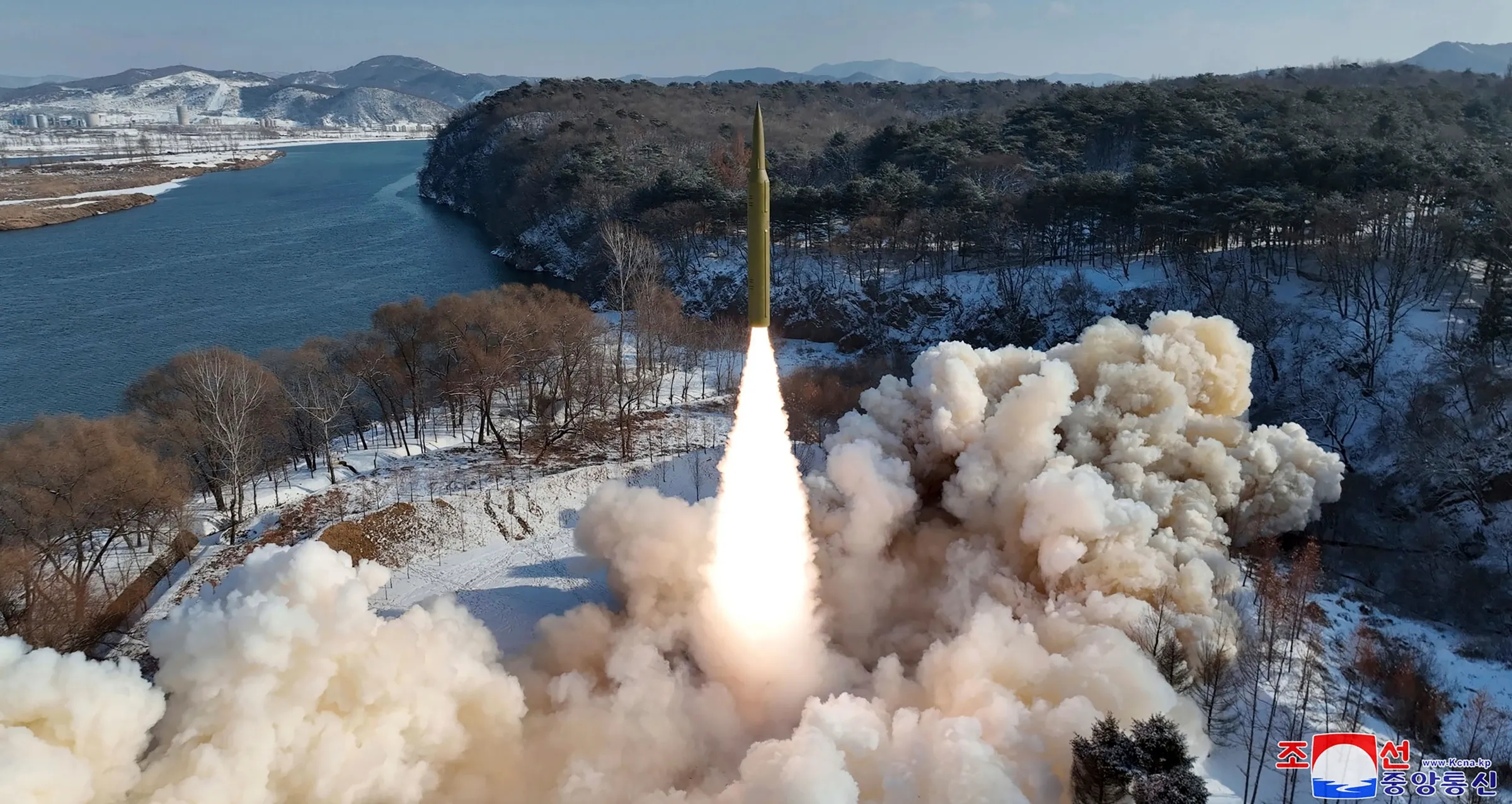
-
Kim with Morning Star-9 and -4 UAVs.
 Spoiler
Spoiler




-
14 hours ago, alanch90 said:
So this is the first serial batch?
IDK, no specific info.
-
More Russian tanks with EW kit against drones. This kit AFAIK is "Saniya".


https://t.me/rsotmdivision/13150
3mx video of their Saniya system. It automatically detects drone (radio signal) at up to 1.5km and can jam/suppress them up to 1km.
-
Quote
The Kalashnikov Concern announced that it has signed a major export contract for the supply of guided missiles "Vikhr-1" to a friendly state.
Apart from Russia, Egypt is the only operator of the Ka-52. However, one of the potential buyers could be Iran with its new Mi-28 helicopters.
-
TOS-1A with EW kit and cope cages.

-
-
ERA protected from 2 FPV drone strikes. People are saying that commander's side of the turret are more often hit by drone operators.

-
-
On 12/20/2023 at 3:59 PM, LoooSeR said:
 Spoiler
Spoiler
-
FAB-1500M54 with its own special version of UMPK

 Spoiler
Spoiler
ODAB-500 and RBK-500 with UMPK
 Spoiler
Spoiler
-
NK production facility with Hwansongpho-11ra system launcher vehicles.
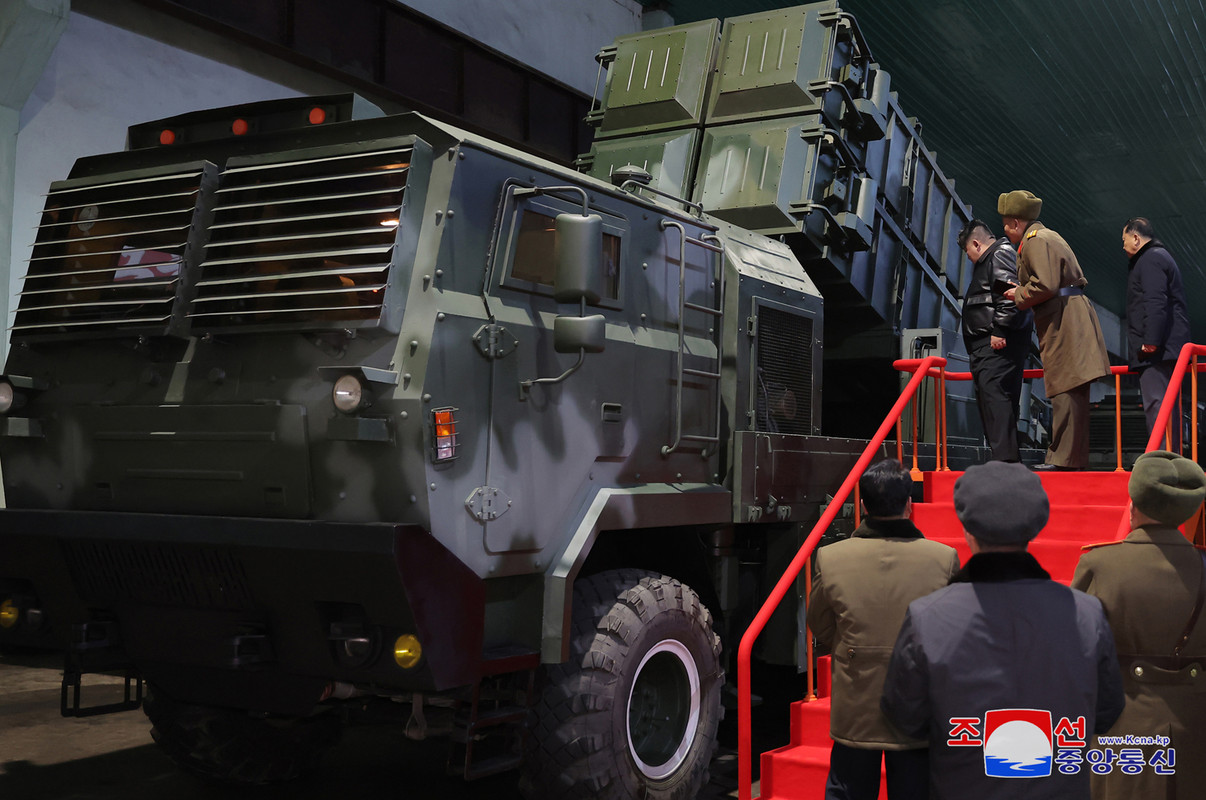 Spoiler
Spoiler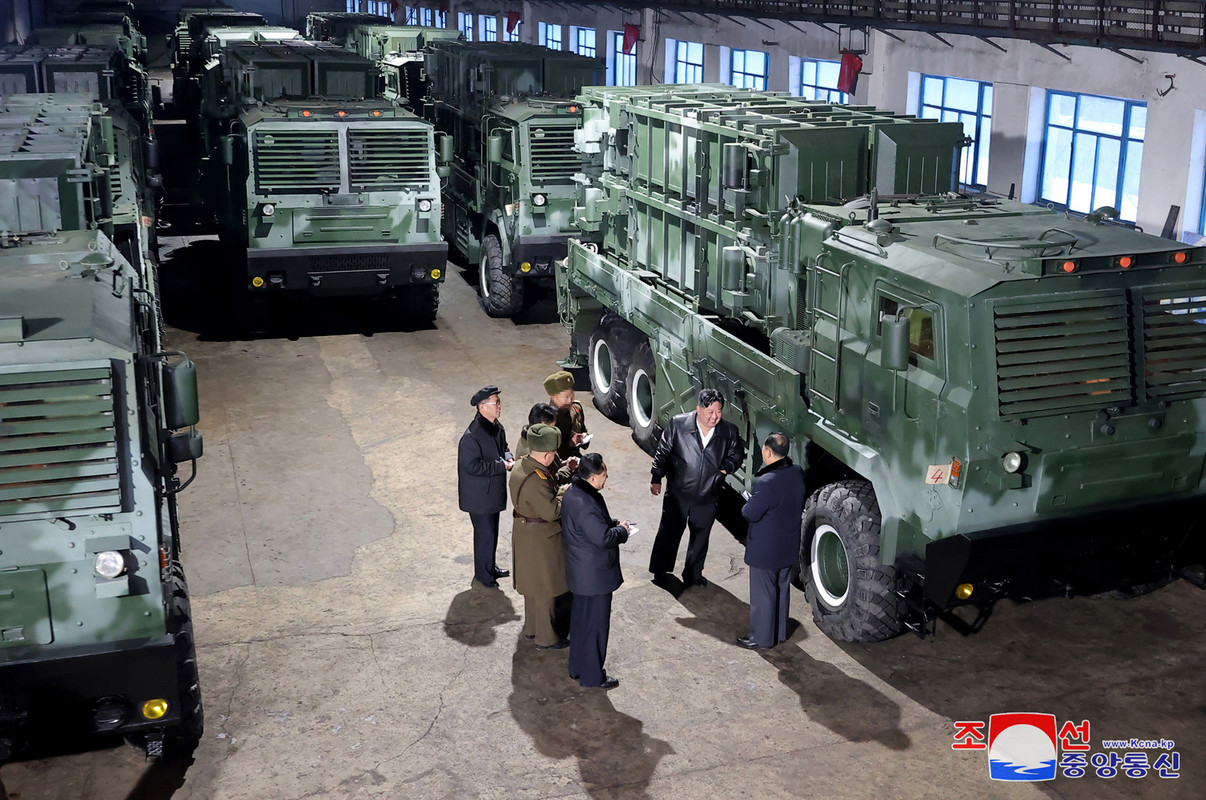

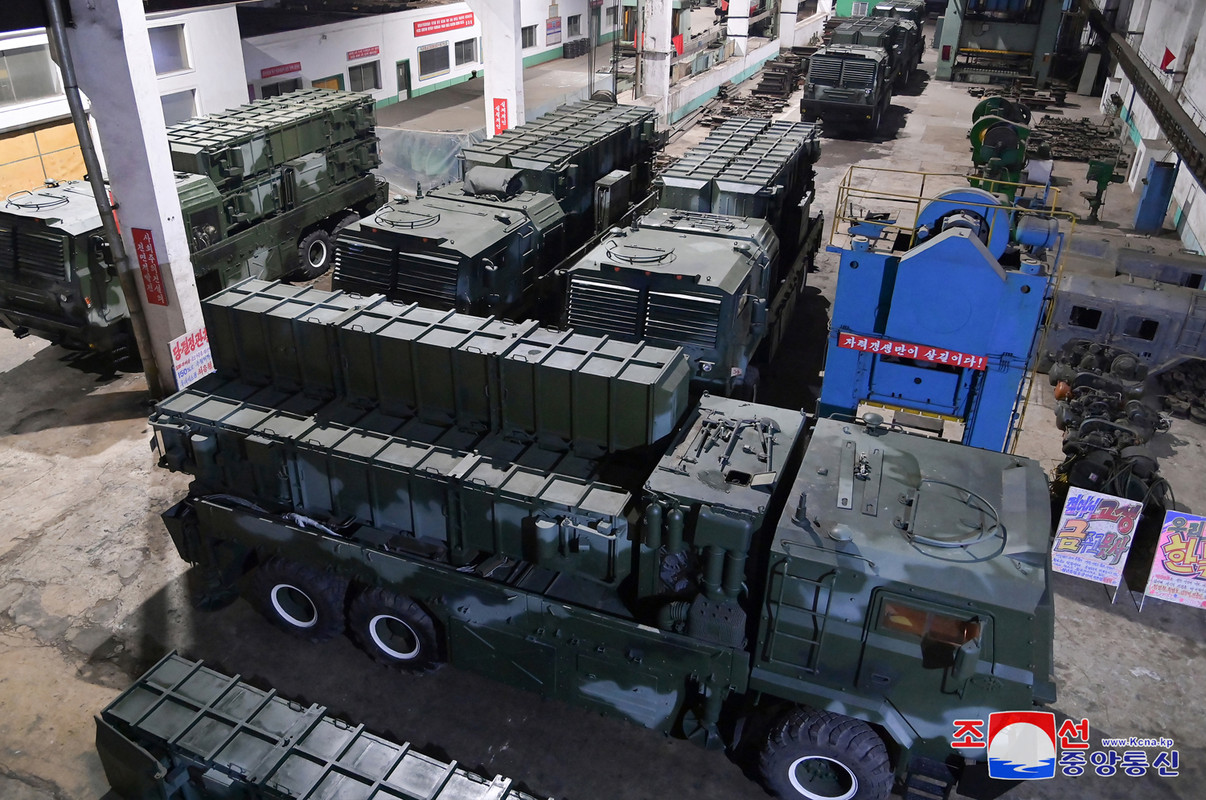

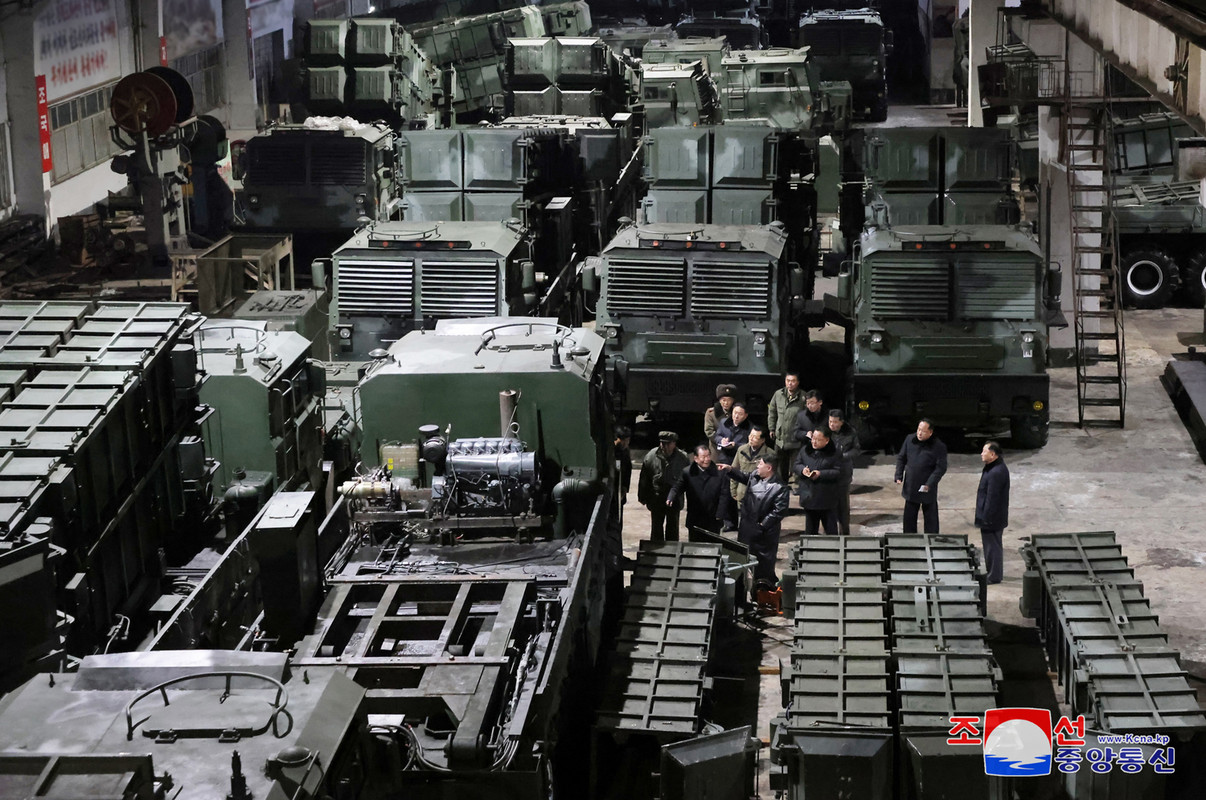



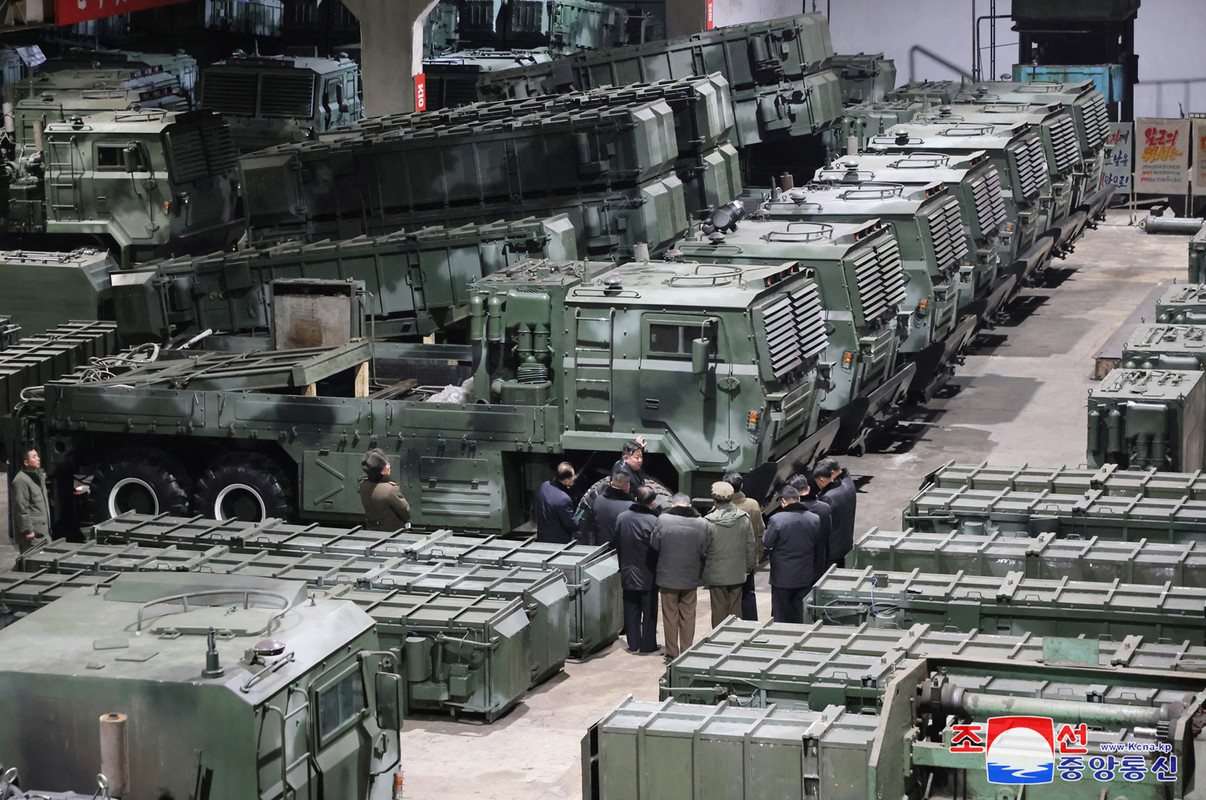
-
Quote
The Russian Ministry of Defense has approved the technical requirements for new generation air defense systems, sources in the military department told Izvestia. Now, in addition to the missiles themselves, they will be equipped with lasers to suppress drone optics and electronic warfare systems. It is expected that new anti-aircraft missile systems will replace the proven “Tor” and “Strela-10”. Experts note that the presence of laser systems will make it possible not to waste expensive missiles on destroying cheap drones.
According to the publication’s interlocutors, it is expected that the first prototypes of the new air defense systems will appear in the late 2020s – early 2030s. They should replace the Tor, Strela-10 and a number of other air defense systems that are currently in service with the Russian Armed Forces.
With the development of drones and their massive appearance on the battlefield, air defense troops faced a certain problem: in order to shoot down a cheap drone costing a couple of hundred dollars, an anti-aircraft missile is spent, the price of which is several orders of magnitude higher. What makes its use, if not meaningless, then ineffective. That is why promising anti-aircraft systems will have laser systems to destroy such targets, former deputy commander-in-chief of the Air Force Aitech Bizhev told Izvestia.
— We have been talking about updating the requirements for air defense systems for a long time. This is part of the strategy for the development of air defense troops and the air force,” he explained. — Electronic warfare systems will throw enemy aircraft off course and mislead them so that they do not achieve their goals.
— One product will combine electronic warfare, missiles and an optical signal suppressor, that is, a laser emitter. This is certainly a positive thing,” military expert Viktor Murakhovsky told Izvestia. — But a lot depends on who exactly will be involved in the development. “Tor” and “Strela-10” are created by different manufacturers. Who will be responsible for the implementation of the approved technical specifications will be of great importance.Ideas for SHORAD systems in 2030s from our MoD.
-
Soviet program to design caseless ammunition from 50s, 60s and up to 70s. Later projects are still secret.

AO-31-7, 1965, 7.62 caliber avtomat with caseless ammunition.
QuoteThe first work on caseless ammunition in the USSR began immediately after the Great Fatherland War. In January 1946, the first technical requirements for the cartridge were formulated, which did not require the usual and, as it seemed, necessary for a unitary cartridge element in the form of a case. This cartridge was intended for firing single and automatic fire at a range of up to 1 km. The accuracy of the fire and the amount of dispersion were planned to be no more than 1.5 times greater than that of the gross rifle cartridges mod. 1908 with a light bullet. The lethal effect of a bullet at 300 m was determined by penetrating ten 25-mm dry pine boards with a distance of 10 cm between each. The direct shot range was 300 m.
To achieve these parameters, the first work began with large-caliber caseless cartridges. With the adoption of the automatic cartridge mod. In 1943, all research switched to an intermediate caliber of 7.62 mm using bullets from the standard Kalashnikov assault rifle (AK) cartridge. Work on new caliber cartridges at the Klimov Research Institute-61 (future TsNIITOChMASh) continued in 1958. The main goal for the institute’s specialists was to reduce the weight of cartridges as much as possible.
In 1963, based on the results of research work (R&D) “Razvitie”, one of the ways to improve rifle and machine gun cartridges was to reduce the weight of ammunition through the development of caseless cartridges. Such ammunition was a compressed powder charge, which had a primer in the tail and a protruding bullet in the nose. The cartridge had a length of 38.5 mm (equal to the length of the cartridge case of the model 1943), weight 10 g (the mass of the cartridge model 1943 with the PS bullet was 16.3 g) and a maximum diameter of 11.5 mm (corresponding to the size of the cartridge case of the model . 1943).In 1965, NII-61 designed the AO-31-7 assault rifle for a caseless cartridge. Unlike its regular AO-31 counterparts, the modification with prefix seven did not have an ejector or reflector. However, it was not possible to achieve normal functioning of a caseless cartridge in automatic weapons. “Crude” cartridges and their imperfect design were blamed for this. The main problem during testing was the self-ignition of the cartridge in the heated chamber of the weapon after only 20-30 shots. As a result, this branch of research reached a dead end, and a change in approach to solving this problem was required.
Subsequently, work with caseless ammunition switched to 5.6 and 5.45 mm calibers. The overall design of the cartridge has remained virtually unchanged. Combinations of a 5.45 mm PS bullet with various shapes and masses of a powder charge, as well as its composition, were used. Caseless ammunition was manufactured at the Kazan Powder Plant. Such a cartridge weighed about 5 g (5.45x39 mm cartridge weighed 10.5 g), had a length of 36 mm and a diameter of slightly less than 10 mm. Possessing almost the same characteristics as the 13MZhV cartridge (the future 7N6), the caseless ammunition provided an almost twofold advantage in length and more than twofold in weight. A 39 mm long version, weighted to 7 g, was also tested, which had a significantly larger mass of powder charge.
 Quote
QuoteThree problems
Work on caseless weapons chambered for the new 5.45 mm cartridge at the Izhevsk Machine-Building Plant (Izhmash) began in 1969. The main problems faced by Izhevsk gunsmiths were:- Ensuring tight locking of the chamber when firing;
- Reliable extraction of a misfired cartridge;
- Exclusion of a spontaneous shot from spontaneous ignition of powder charge after shooting the ammunition.
In an attempt to solve these problems, Izhmash is first constructing the first version of the avtomat for the 1MS caseless cartridge, designated AB-1. As a method of sealing the AB-1 chamber, a combined scheme was chosen, in which two spherical surfaces of the bolt and chamber are pressed against each other under the pressure of powder gases. The movable chamber sleeve is sealed with compression rings, similar to the operation of internal combustion engines and pumps. This obturation system is protected by two copyright certificates based on applications from 1970 and 1972.
 Quote
QuoteThe low strength of the powder block does not allow it to be used to extract a cartridge that does not have a casing, so the AB-1 assault rifle uses a method of pushing the cartridge out from the side of the bullet. To do this, the chamber is tilted to the side, and the charging handle pushes the cartridge out of the weapon, acting on the front end of the bullet. Thus, the remains of the powder block, damaged when the striker hits the primer, are also removed.
When using 1MS type cartridges with an open powder block, the walls of the chamber can heat up to a temperature of plus 500 degrees Celsius. To minimize the temperature effect on the firing process, the primer is broken immediately after the cartridge is chambered. Several other options for solving the problems of obturation, feeding cartridges and extracting misfired ammunition were tested in the design of another Izhevsk gun - the ABP (on picture).
 Quote
QuoteSecond among AB.
The design of a prototype of a modified avtomat created by B.M. Zorin and P.N. Korolev, considered in October 1973. The main characteristics of the AB-2 were compared with the 6P20 assault rifle, which in just a few months would become the AK74. With equal caliber and ammunition of 150 rounds, the mass of such a combat weapon set for the AB-2 turned out to be 4.83 kg instead of 6.12 kg for the Kalashnikov assault rifle. At the same time, the rate of fire of the AB-2 increased significantly to 900-1000 rounds per minute, and the initial bullet speed turned out to be slightly lower and amounted to 840 m/s.It is worth noting that according to the technical specifications for the caseless machine gun, a magazine with 50 rounds of ammunition and standard ammunition with four magazines were assumed. The remaining characteristics were almost identical and very close to those of the 6P20 assault rifle. However, given the early stage of research work and the incomplete readiness of the prototype, many of the practical characteristics of the AB-2 were never determined and studied.
 Quote
QuoteIn terms of seats and the rifled part of the channel, the barrel of the AB-2 assault rifle is unified with the 6P20 assault rifle. This was facilitated by the intra-ballistic characteristics of the 1MS cartridge, identical to the experimental 13MZhV cartridge (soon to become the usual 5.45x39-mm 7N6). The supply of cartridges from a box magazine is carried out according to the usual pattern, and the location of the bolt lugs behind the magazine made it possible to raise the cartridge feed line and practically straighten its trajectory, reducing the load on the cartridge itself.
Weapon automation works through the use of powder gases acting on a firing striker, which also serves as a piston. Due to the movement of the firing striker, the frame with the bolt is retracted to the rearmost position. At the same time, the movable chamber sleeve moves backward (under the action of a spring and powder gases). Then, under the action of the recoil spring, all parts of the automation move forward, sending the cartridge into the chamber and hitting the primer. Shooting is carried out with both single and automatic fire. The remaining parts and mechanisms are designed and operate similarly to the AKM assault rifle.
The results of practical shooting from the AB-2 assault rifle showed quite encouraging results. After 800 shots, the chamber seal remained unchanged, and the degree of contamination of the automation parts did not exceed the degree of contamination of standard weapons. During shooting from various positions, the shooter did not feel the breakthrough of gases or the emission of solid particles. The accuracy of fire at a distance of 100 m with single fire was Sb x St (core dispersion stripes in the lateral direction and in height), equal to 11.3 x 14.3 cm, and with automatic fire - 31 x 26.2 cm.
The conclusion based on the results of testing a prototype of the AB-2 assault rifle chambered for the 1MS caseless cartridge stated that the fundamental issues set by the tactical and technical requirements had been successfully resolved. Subsequently, a third version of the assault rifle designed by Zorin-Korolev appeared. The further fate of the AB-3 and other Izhevsk developments is still unknown, however, it is obvious that domestic models of weapons chambered for a caseless cartridge were unable to pass a number of very stringent tests of the functioning of weapons in difficult conditions.

AB-3 prototype rifle
QuoteUnder "Secret" mark.
Information about domestic caseless cartridges is still classified as “Secret”. The developer of caseless cartridges (Klimovsky TsNIITOCHMASH) stated in 2013 that this topic is still classified and information about it is not subject to disclosure. Moreover, the design of similar foreign cartridges has long been known and described in detail.Some of the files in the Izhevsk archives on work in this direction were declassified in 2011. The fate of such research in other weapons design bureaus still remains under a veil of secrecy. Thus, several samples of Tula KBP and TsKIB SOO chambered for a special cartridge are known, the design of which was carried out by S.A. Yartsev. The simple formulation “special cartridge” still sometimes hides domestic caseless ammunition.
According to official data, S.A. Yartsev developed the TKB-590 and TKB-0106 assault rifles and the TKB-061 small machine gun. Based on the indicated indices, it can be assumed that the “KBPshny” TKB-590 and the “Tskibovsky” TKB-061 were developed at the turn of the 50s and 60s, when the designer of these products transferred from KBP to TsKIB SOO. It is difficult to determine the caliber of the cartridge for which they were designed, but the later TKB-0106 product was definitely powered by 1MS type cartridges.
-
-
Russian Gibka-S SHORAD in Ukraine. Test run, i guess. Combat vehicle of the Gibka-S SHORAD system on 1st and 2nd photos, 3rd - recon and commander's vehicle.
 Spoiler
Spoiler

-
Proud creation of the Russian JDB branch
 Spoiler
Spoiler
-
Soviet Krylo UAV system.
 Quote
QuoteComplex called “PERO WITH MSBR WING”, so the complex cannot find accurate information.
Background
A regiment of front-line reconnaissance UAVs was withdrawn from Lithuania in June 1993 to the village of Vyazniki, Vladimir province.
The regiment was also armed with the "REIS" complex, also known as Tu-143One of the sources says that this drone (Krylo) managed to take part in the war in Afghanistan, had a combat radius of 90 km, a height of 1000 m, on board a traditional photo camera, a real-time television camera (optionally replaceable to a thermal imaging camera). However, due to some difficulties with operation, the “Wing” did not gain much popularity.
The unmanned vehicle of the “Wing” complex was created at the Kazan Design Bureau “Sokol” under the leadership of A.I. Osokin and U.A. Tsarev. The “Wing” variant of the complex was created with the placement of control and launch equipment for aircraft on the chassis of armored vehicles of the MT-LB type. The UAV successfully solved general reconnaissance tasks on the battlefield and near enemy lines. In 1987, the “Wing” complex was put into service, however, its significant disadvantages were the bulkiness of ground equipment and difficulties in organizing the necessary technical support and operation. In this regard, the use of the “Wing” complex was limited.
 Spoiler
Spoiler

-
-
Quote
On January 4, 1974, the D-5U missile system with the R-27U missile was adopted by the USSR Navy to equip Project 667AU nuclear submarine cruisers. Developer - Mechanical Engineering Design Bureau (Miass), chief designer V. Makeev.
R-27U is the first naval missile with a cassette (three-block) warhead. The missile used two warheads: a more modern monoblock and one divided into three low-power warheads. The creation of a small-sized warhead of a small power class became the first necessary step and a condition for the subsequent development of multi-unit multiple warheads for individual guidance of naval missiles.
The warheads were installed at a joint that was identical to the front joint of the R-27 missile body, through appropriate adapters. The adapter for the MIRV contained a mechanism for deflecting the blocks from the transport to the flight position for their subsequent pushing away (at the end of the active section) and flight to nearby aiming points. A similar warhead of a cluster or dispersive type was used on the American Polaris A-3T missile and in versions of the domestic R-36 and UR-100U ICBMs.
For the R-27U missile, the propulsion engine and on-board control system equipment were upgraded to a limited extent. The firing range for the monoblock increased by 20%, for the three-block warhead it remained the same (2500 km), firing accuracy improved by 15%.

-
Izdelie-55, new drone from ZALA. Close range version, use same launchers as Izdelie-53, high EW resistance as Lancet.

-















Jihad design bureau and their less mad opponents creations for killing each other.
in Mechanized Warfare
Posted
MT-LB status - Jihaded. Again.